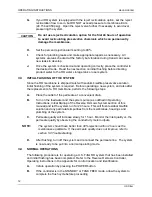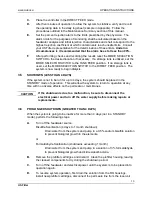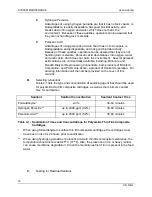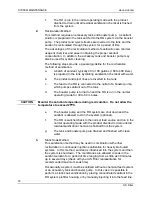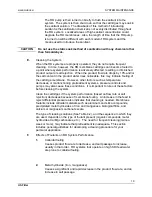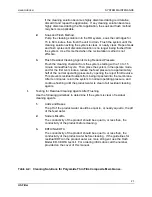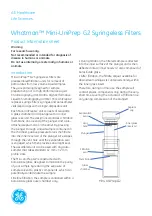
SYSTEM MAINTENANCE
MANOWNROSM
US Filter
20
3.
Biological fouling
Causes a biofilm to form on the membrane surface. This biofilm inhibits
the membrane’s ability to reject salt, and therefore salt passage
increases. The product flow rate may also decrease, but not necessarily
at a rapid rate.
4.
Scaling
Causes a decrease in the product flow rate and an increase in salt
passage.
G.
Factors to Consider when Cleaning RO Cartridge
1.
Use RO product water for cleaning and rinse solutions.
Use RO product water to prepare cleaning solutions, and as flush water
between each cleaning step. If RO product water is not available, use
softened filtered tap water. Completely flush the system between
applications of different cleaning solutions.
2.
Increase flow rates and decrease pressure.
During cleaning, reject flow rates should be as high as possible without
exceeding the maximum design flow of the system. The reject regulating
valves should be fully opened to minimize transmembrane pressure.
Transmembrane flow keeps foulants within, or on the membrane surface
during cleaning. Optimally, a high flow, low pressure accessory cleaning
pump should be used.
3.
The temperature must not exceed 35
°
C.
The temperature of the cleaning solution must not exceed 35
°
C. It may
be necessary to install a heat exchanger to prevent the temperature from
exceeding 35
°
C. The optimum temperature of the cleaning solution is
25
°
C to 30
°
C. Cold water reduces the effectiveness of the cleaning
solution.
H.
Choosing the Correct Cleaning Method
1.
Recirculation Method (try this first)
This is the cleaning method of choice. Recirculate each cleaning solution
through the RO system for 45 to 90 minutes. Recirculation cleaning
requires an accessory recirculation tank and pump. The system is fed
from the tank, and the reject and product lines are diverted to the tank.
The RO system should be placed in the manual flush mode during
recirculation with the inlet pneumatic valve and accessory motorized 3-
way valve open, and the RO pump off.
CAUTION
If the system temperature approaches the maximum recommended
operation temperature during recirculation, shut down the system and
allow it to cool off before continuing the recirculation.







